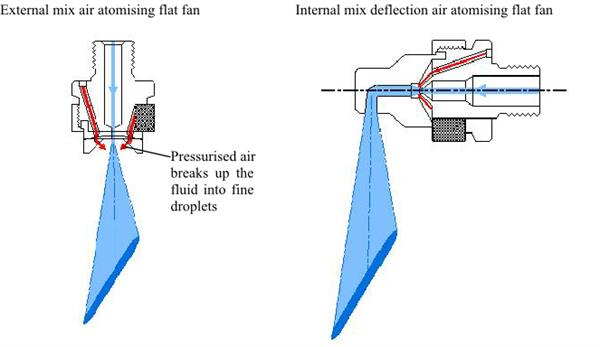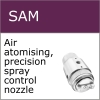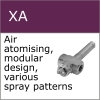Air atomising nozzles for lubrication applications
Air atomising nozzles offer a number of advantages for the spraying of lubricants
Fine sprays at low flow rates
In direct pressure nozzles the energy required to break up the fluid comes from the potential energy of the fluid itself. As more energy is required to break up fluids into smaller droplets, pressure and flow rates need to be increased in order to form very fine sprays. This increase in flow rate may not be desirable as it might result in too much lubricant being delivered. Air atomising nozzles overcome this problem by using compressed air to break up the lubricant into a very fine spray. This means that even at very low flow rates fine sprays can be achieved.

Spraying viscous lubricants
The mixing of the compressed air and the lubricant could cause spraying problems with some lubricants. External mix air atomisers mix the lubricant and air after ejection from the orifice allowing more viscous fluids to be sprayed.
Variable spray pattern types
Air atomising nozzles can be used to produce hollow cone, full cone and flat fan patterns for lubrication. For the ultimate in spray control though the SAM series of advanced air atomisers can be used. These nozzles have two separate air feeds, both independent from each other and the fluid feed. One air feed controls the droplet size, the other the shape of the emerging spray pattern. This gives complete control of lubricant delivery area, volume and droplet consistency.
Further details
Full product details can be found by clicking on the product boxes below.


For other spray nozzles for lubrication please click.